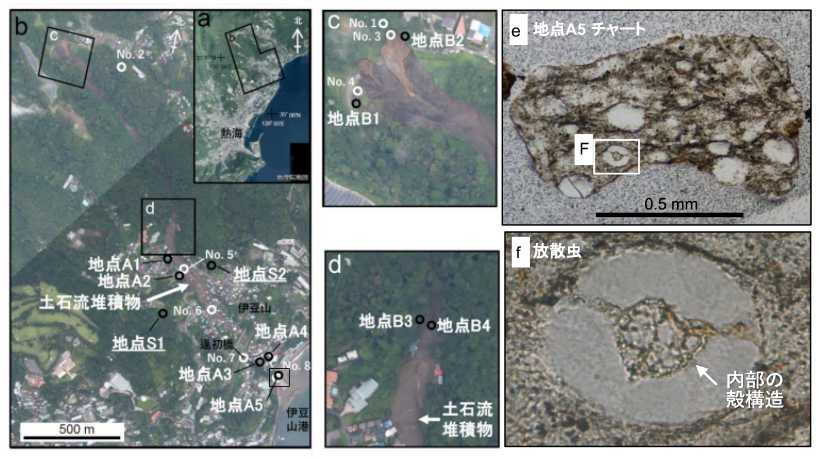DATE2022.05.20 #Press Releases
Geochemical and particle composition analysis of fill and debris flow deposits from the July 3, 2021 landslide in Atami, Shizuoka, Japan
Disclaimer: machine translated by DeepL which may contain errors.
Shizuoka University
Japan Atomic Energy Agency
Fujinokuni Museum of Global Environmental History
Ehime University
The University of Tokyo Graduate School of Science
Overview
A research group from Shizuoka University, Japan Atomic Energy Agency, Fujinokuni Museum of Global Environmental History, Ehime University, and The University of Tokyo Graduate School of Science has conducted a geochemical and particle composition analysis of the fill and debris flow deposits at the site of the July 3, 2021 landslide in the Izuyama area of Atami, Shizuoka Prefecture, and the following results were A press release was issued at 2:00 p.m. on May 20, 2022.
1. The black sediment in the embankment was brought in from another location.
2. The mixture of black and brown sediment does not explain the mud particle composition of the debris flow deposit.
3. Chert rock fragments were found in the black sediment and debris flow sediments. The radiolarian fossils and dolomite particles contained in the rock fragments indicate that they are derived from chert layers formed during the Paleozoic/Mesozoic boundary to the Early Cretaceous period.
4. Since chert is a basement rock throughout Japan but is not distributed in Atami City, it is an effective tracer material for black sediments and is an important key to identifying black sediment collection sites.
It was pointed out that black sediments may have been more prone to collapse than brown sediments, and this study points out that chert rock fragments are effective tracer materials for black sediments. Therefore, by conducting borehole drilling in the embankment and examining the presence or absence of "black sediment" based on the presence or absence of chert rock fragments in addition to the chemical composition of the sediment, it will be possible to evaluate the disaster hazard of the embankment.
Figure: Flow paths and sampling sites of mudslides in Atami City and chert and radiolarian fossils found. Figures a-d: Mudslide flow paths and sampling points, No.1-8 are sampling points in Shizuoka Prefecture (2021b). Images are from Geographical Survey Institute map (2021). e-f: Photographs of chert flakes and radiolarian fossils in debris flow deposits.
Associate Professor Masayuki Ikeda of the Department of Earth and Planetary Science, Tomonori Nakagawa, a second-year master's student, and Technical Specialist Koji Ichimura of the Technical Division contributed to the research results.
For more information, please visit the Shizuoka University website.



